The history of fruit culture
“During two generations, the Senningen orchards had been a real money-spinner for the local farmers”. This was the for-word of a leaflet in 1984 and perfectly reflects the importance of the local fruit growing activity of once.
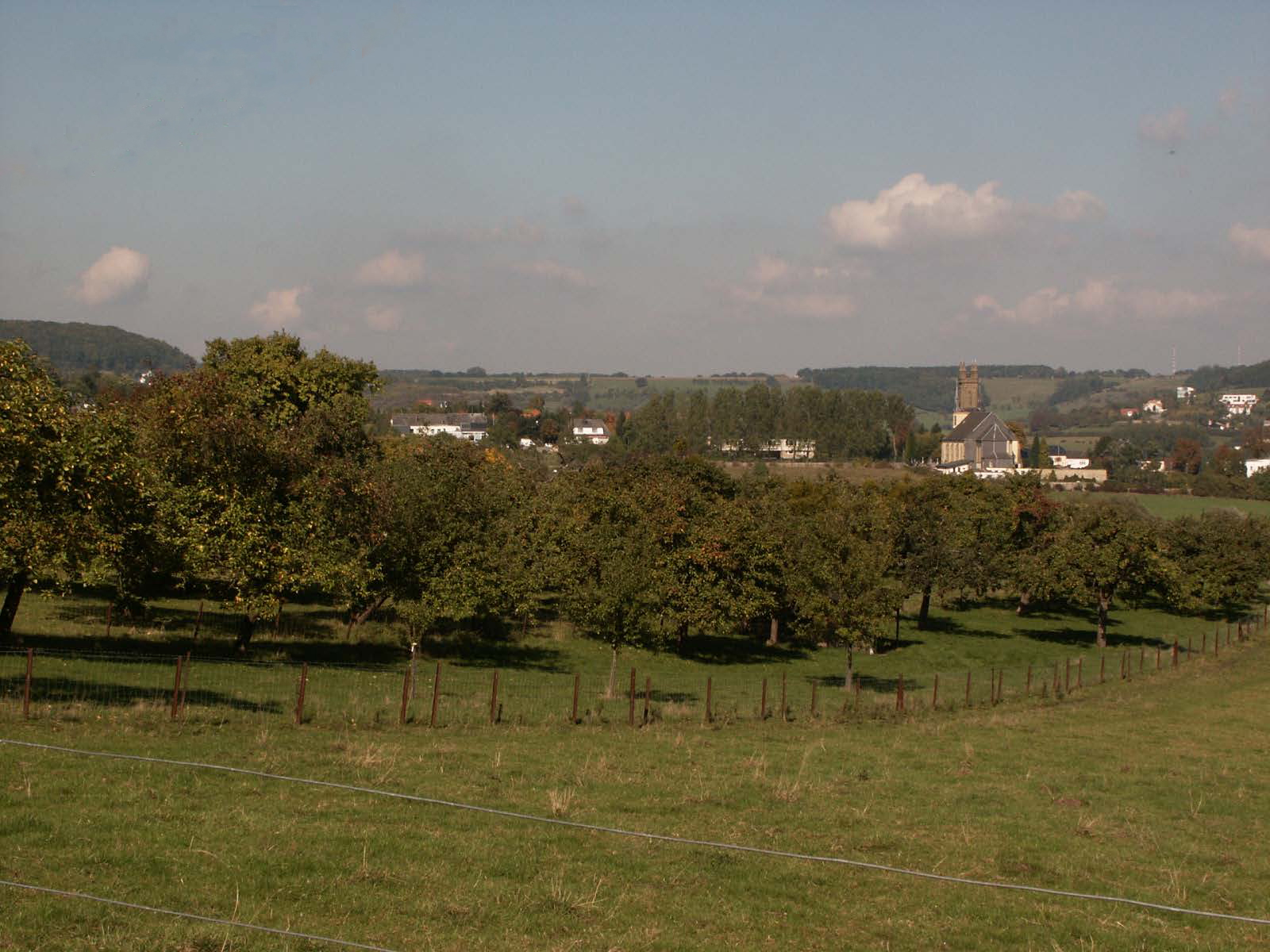
Senningen and Niederanven in the middle of the orchards.
Fruit growing had already been introduced in our regions by the Romans and developed in the Middle Age monasteries. But it reached its activity peak in the 19th century. In Senningen, at the end of the 19th century large orchards had been created mostly by unemployed workers, who had lost their job in the local paper mill. First farmers still had to bring their harvest to Luxembourg City with wagons and horses, but then later on at the beginning of the 20th century, they could use the new small railway line “Charly”, a very easy and effective mean of transport at these days.
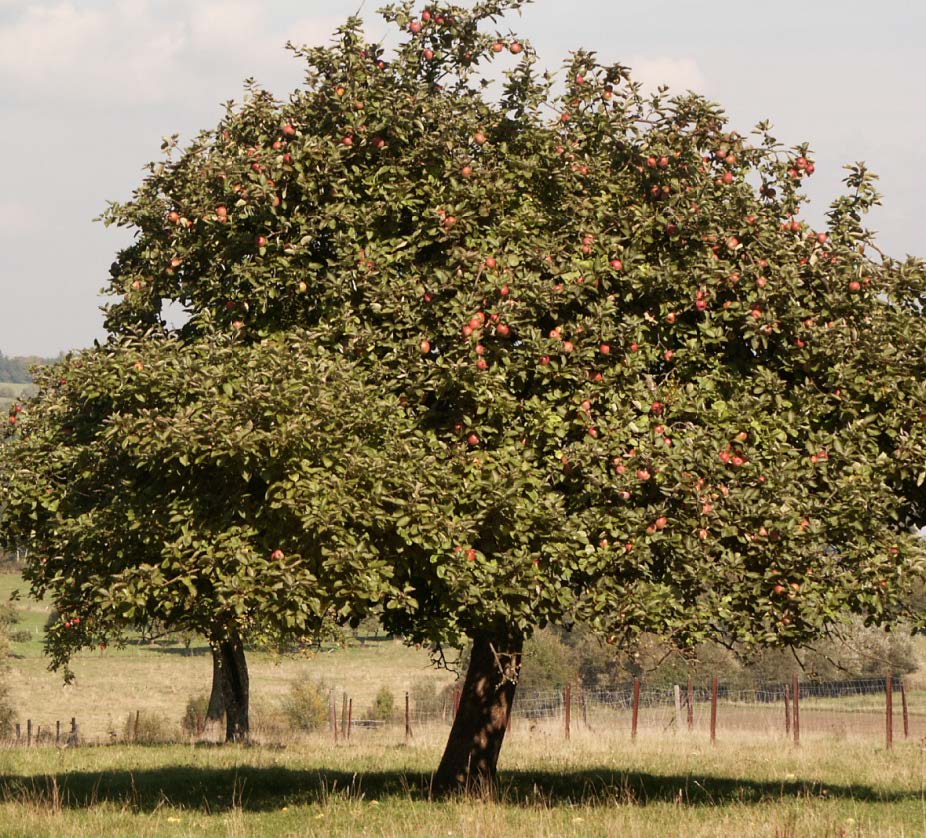 The fruits from Senningen were also appreciated abroad. During World War I the German army bought on a regular basis apples, plums and pears. They loaded them on the trains in Rood/Syre to bring them to Germany.
The fruits from Senningen were also appreciated abroad. During World War I the German army bought on a regular basis apples, plums and pears. They loaded them on the trains in Rood/Syre to bring them to Germany.
After World War II, the fruit growing activity lost of its importance. In 1902, at its peak, you could count in Senningen, Senningerberg, Oberanven and Niederanven around 27.000 fruit trees. In 1992 only 7.121 trees have remained in the Niederanven municipality and two thirds of this crop is too old.
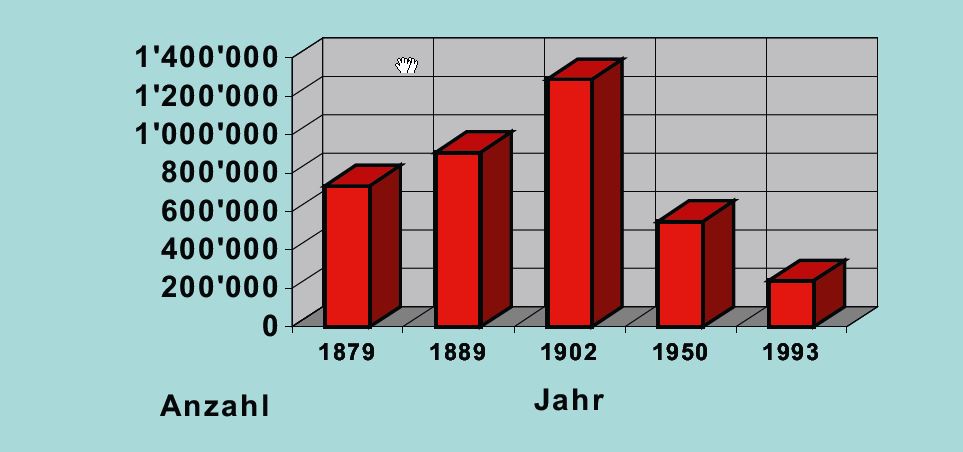 The reasons for this regression are numerous. The agricultural restructures, the dropping prices for native fruit, the transformation of orchards’ ground into construction ground and certainly also the change of the consumers’ attitude may be listed as the most important responsible facts.
The reasons for this regression are numerous. The agricultural restructures, the dropping prices for native fruit, the transformation of orchards’ ground into construction ground and certainly also the change of the consumers’ attitude may be listed as the most important responsible facts.
During these last years serious efforts were being made to stop this regression of orchards in the region. The Luxembourg State strongly subsidies the setting up of orchards and a special plantation plan had been started by the communities of Niederanven, Schuttrange, Contern, Sandweiler and Weiler-la-Tour (SIAS), where specialised fruit tree-cut training courses are offered to all persons interested in orchard management.
Different grown fruit species
In Senningen only the native variety of fruits were grown, as they better resist against diseases and only need a minimum of care. Among the apples the species “Rambour” and “Letzebuerger Triumph”, “Transparente Blanche”, “Reinette des Vergers” or “Boskoop” are the most grown. As for the pears one used the “Curé” and “Letzebuerger Mostbir” mostly. But also plum, cherry and prune trees were planted.
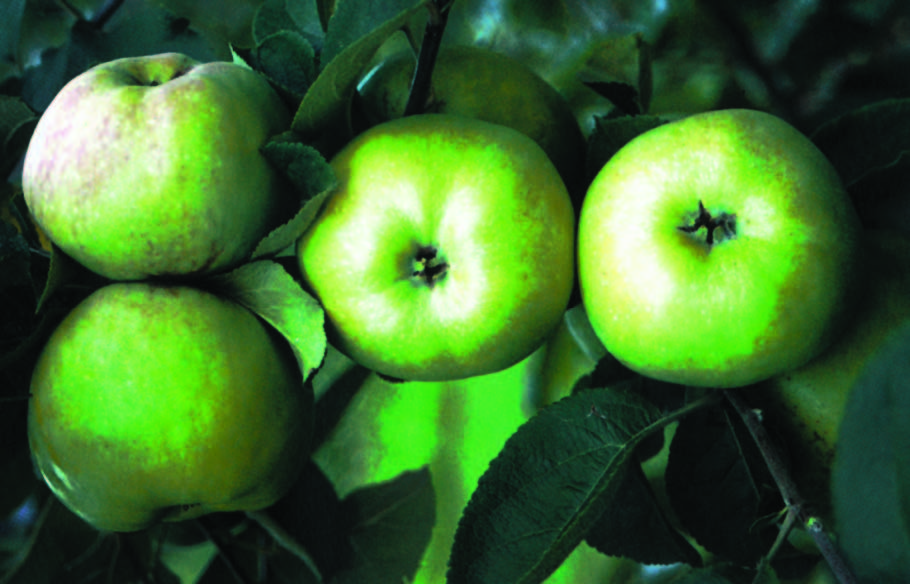 |
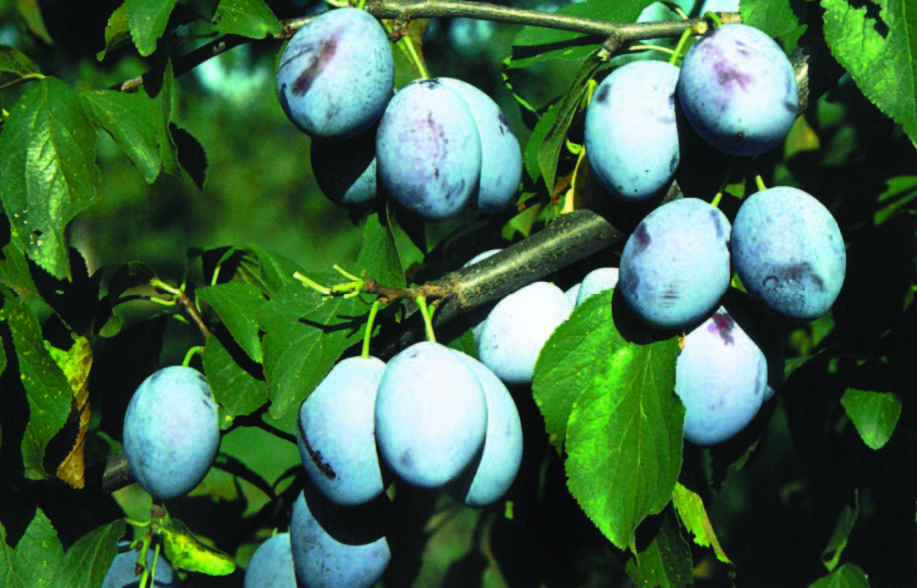 |
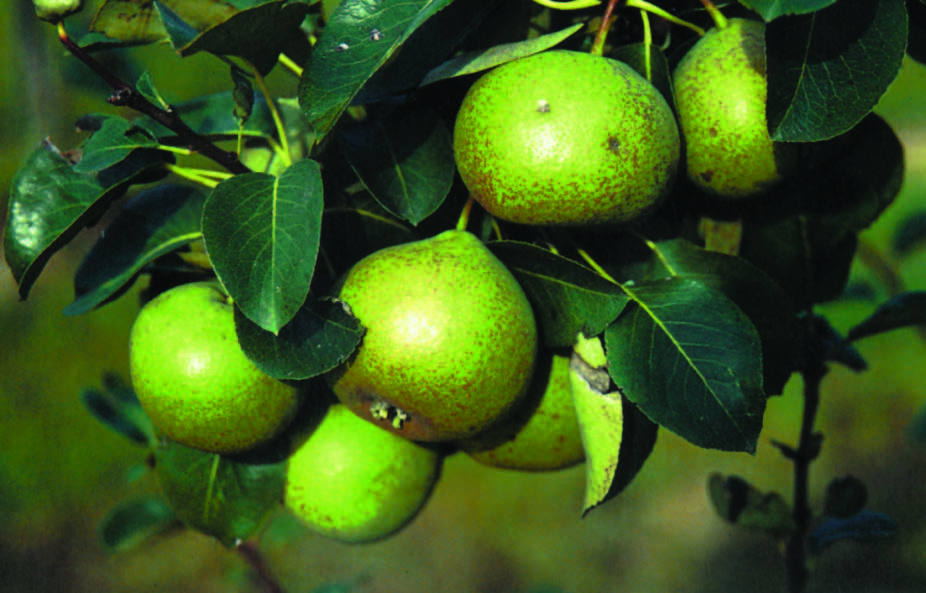 |
| Reinette des Vergers | Quetsche | Lëtzebuerger Mostbir |
The introduction of hybrid and other species from abroad did cause more problems, as the trees were not so resistant against diseases. That is why mainly the high stem trees were planted, as they do not need special care, enrich the local landscape and produce vitamin-packed fruit.
The importance of the orchards
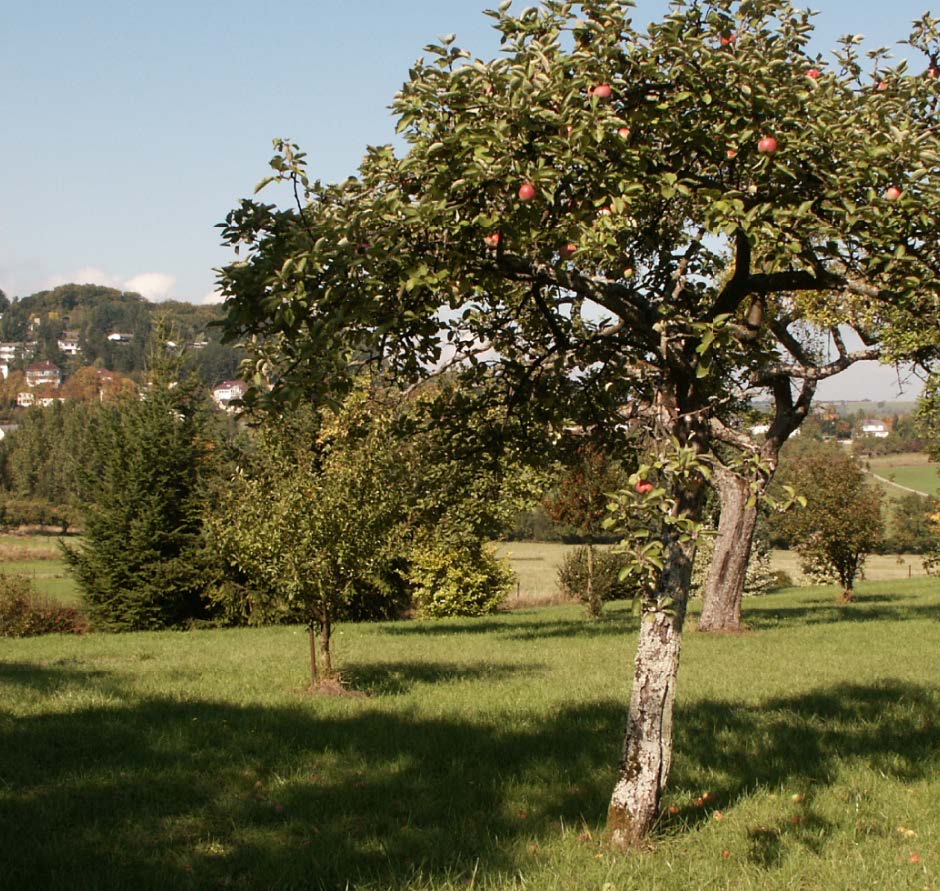
The plantation of young fruit trees guaranties the future of the orchards.
Orchards are an important component of our environmental landscape. They surround our villages and enrich the structure of the natural scenery in all seasons. They offer more and more fruit and a precious habitat to the many local fauna and flora species.
The half-open habitats are of a crucial importance for the forest and for the open field species.
The diversity of birds is one of the most facts linked to the presence of orchards. You have for example the presence of the wryneck, the little owl, the hoopoe or the green woodpecker.
As orchards nearly never need to get fertilized, you can still find those fauna and flora species that have already disappeared on other grounds. That is why the orchards represent a very precious habitat for animals and plants in danger of extinction.
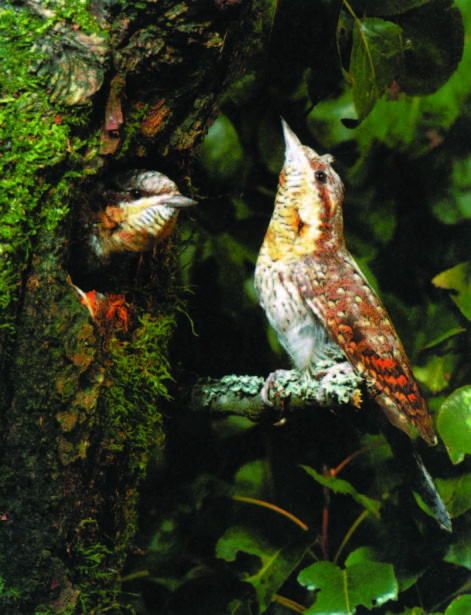 |
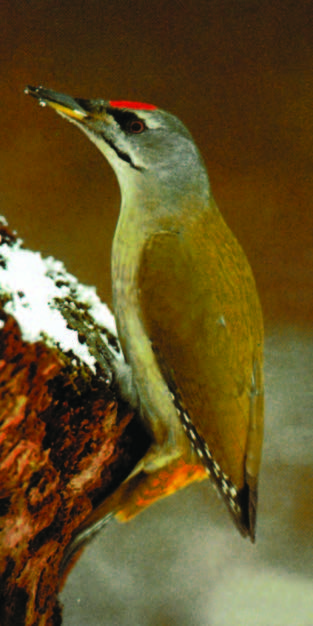 |
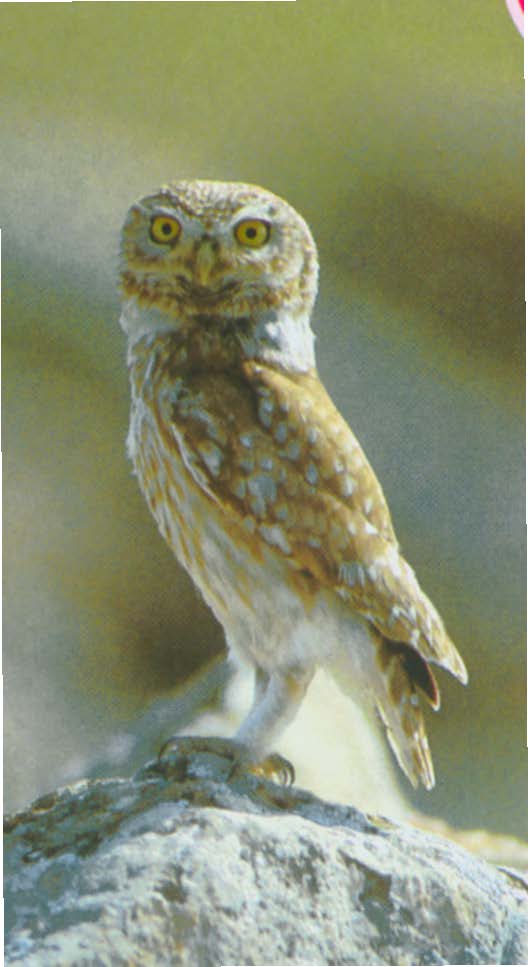 |
| Wryneck | Green woodpecker | Little owl |
Characteristic bird species of the orchards
